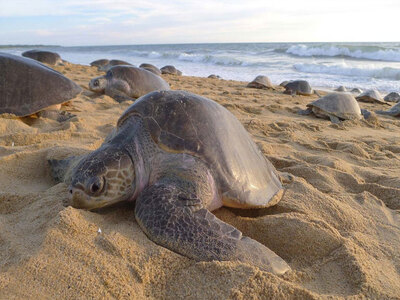
The smallest species of sea turtle is the olive ridley. They possess an olive green, heart-shaped shell, or carapace. Reaching upto a maximum size of 65cm, they can weigh around 35-45kg. These reptiles, which eat crabs, prawns, and jellyfish, can be found in warm waters all over the world, mostly in the Pacific and Indian Oceans.
Between September and November, olive ridley turtles lay their eggs on a variety of beaches in Sri Lanka, notably Kosgoda, Yala, and other scattered areas. Due to the low estimated population of 800,000 olive ridley turtles, this species is only designated as vulnerable.
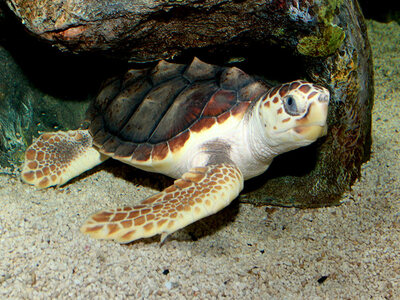
Their enormous skulls and reddish-brown carapace aid in recognizing these large marine reptiles. They can grow upto 1m and weigh 170-200kg. Juveniles are visible in coastal waters, while hatchlings reside on algae mats drifting in warm currents. Loggerhead turtles travel to warmer seas in the winter because they are cold-blooded and must avoid water temperatures below 13°C.
Sea turtles listed as vulnerable include loggerheads. Despite being extremely uncommon in Sri Lanka, loggerhead turtles have been spotted on the beaches at Kosgoda, Rekawa, and Bundala.
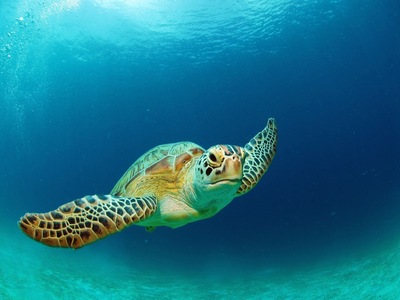
In Sri Lanka, the green turtle is the one that is most frequently spotted. The Atlantic, Pacific, and Indian Oceans all contain them. Carnivores predominate among young green turtles. Adults, however, are herbivores that use their sharply serrated jaws to only consume marine flora.
They can weigh up to 250 kg and reach a maximum length of 1m. A mature female will typically lay 120–140 eggs at a cycle. Near the Kosgoda and Rekawa Beach, green turtles are frequently spotted on the coast at night. They rarely build nests, but when they do, they lay many eggs.
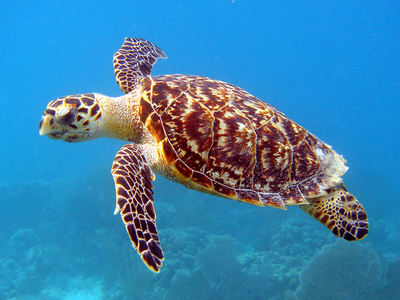
These sea turtles range in size from small to medium, and they have a hawk-like curved, pointed beak. These species can grow upto 1m in length and weigh 250kg. Their bright and erratic shell pattern allows them to be easily differentiated from their relatives. Due to their wide migratory patterns, hawksbills can be found in tropical and subtropical areas of the Atlantic, Indian, and Pacific Oceans.
These turtles are omnivores, eating everything from algae to sea urchins. Despite having a protective shell, this species is hunted by huge fish, sharks, crocodiles, and octopuses. The young turtles are susceptible to shore crabs, coast dogs, and birds, just like other turtle hatchlings. Kosgoda and Bundala Beach are they usual nesting spots in Sri Lanka.
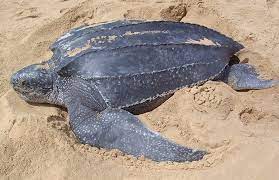
This largest of the five kinds of turtle, which is critically endangered, is an uncommon find in Sri Lanka. They can reach heights much beyond 160 cm and weigh over 700 kg. This species' shell with black and white stripes resembles leather in texture and is softer and more flexible than the green turtle's.
These marine critters can survive in colder temperatures and dive to depths of up to 1000 m because of their thick covering of insulating fat. However, it is still in danger of going extinct. Although it can be rare to see, they are sometimes seen nesting at Kosgoda, Mawolla, Rekawa Beach in Sri Lanka.
| Name of Category | Olive Ridley | Loggerhead Turtle | Green Turtle | Hawksbill Turtle | Leatherback Turtle |
|---|---|---|---|---|---|
| Scientific Name | Lepidochelys olivacea | Caretta caretta | Chelonia mydas | Eretmochelys imbricata | Dermochelys coriacea |
| Where it's found in Sri Lanka | Kosgoda Beach, Yala | Kosgoda, Rekawa, Bundala Beach | Kosgoda, Rekawa Beach | Kosgoda, Bundala Beach | Kosgoda, Mawolla, Rekawa Beach |
| Risk of Extinction | Vulnerable | Endangered | Endangered | Critically Endangered | Critically Endangered |
| Resource: Sea Turtle Conservation In Sri Lanka | |||||